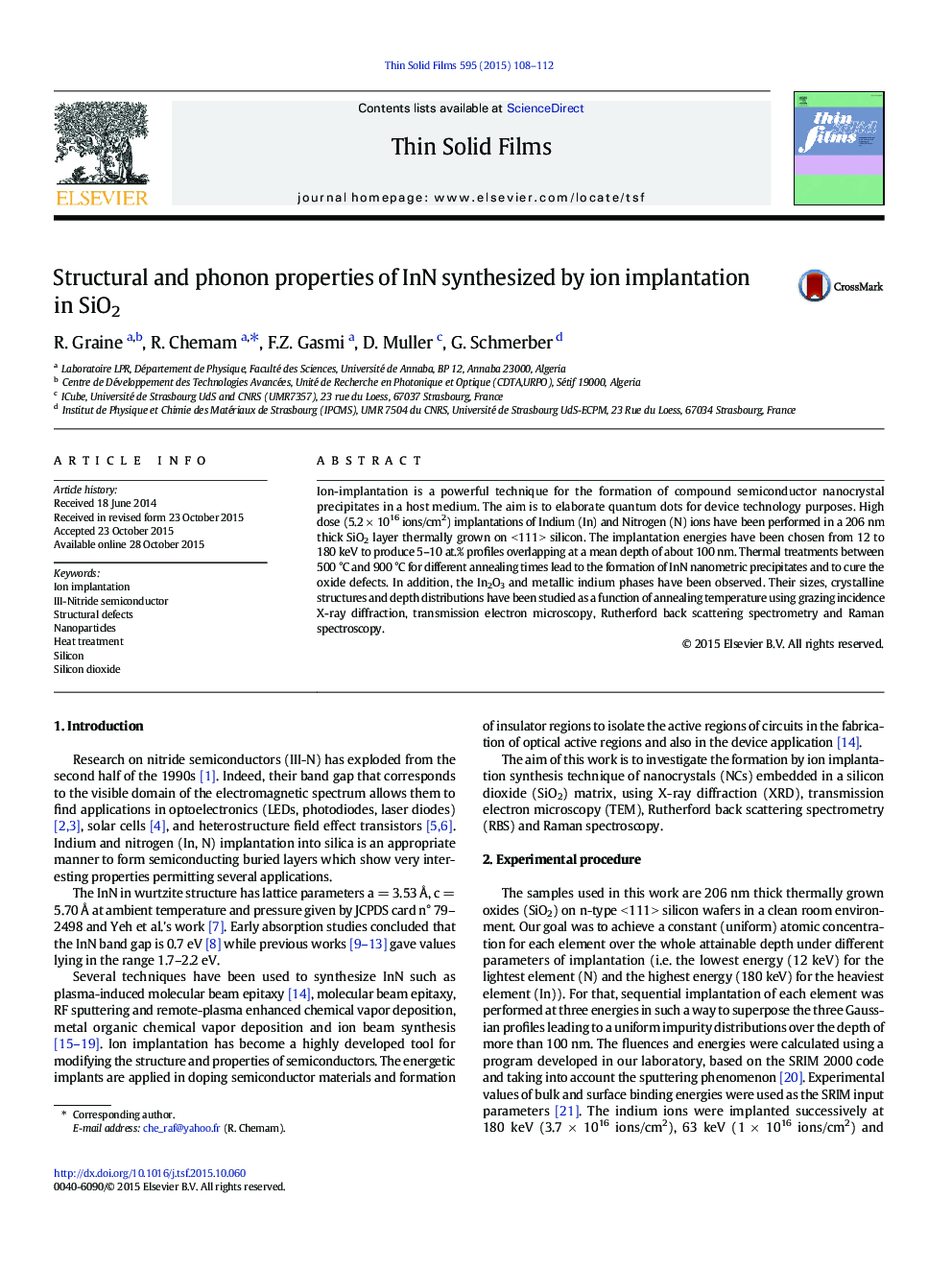| Article ID | Journal | Published Year | Pages | File Type |
|---|---|---|---|---|
| 1664259 | Thin Solid Films | 2015 | 5 Pages |
Abstract
Ion-implantation is a powerful technique for the formation of compound semiconductor nanocrystal precipitates in a host medium. The aim is to elaborate quantum dots for device technology purposes. High dose (5.2 Ã 1016 ions/cm2) implantations of Indium (In) and Nitrogen (N) ions have been performed in a 206 nm thick SiO2 layer thermally grown on < 111 > silicon. The implantation energies have been chosen from 12 to 180 keV to produce 5-10 at.% profiles overlapping at a mean depth of about 100 nm. Thermal treatments between 500 °C and 900 °C for different annealing times lead to the formation of InN nanometric precipitates and to cure the oxide defects. In addition, the In2O3 and metallic indium phases have been observed. Their sizes, crystalline structures and depth distributions have been studied as a function of annealing temperature using grazing incidence X-ray diffraction, transmission electron microscopy, Rutherford back scattering spectrometry and Raman spectroscopy.
Related Topics
Physical Sciences and Engineering
Materials Science
Nanotechnology
Authors
R. Graine, R. Chemam, F.Z. Gasmi, D. Muller, G. Schmerber,
